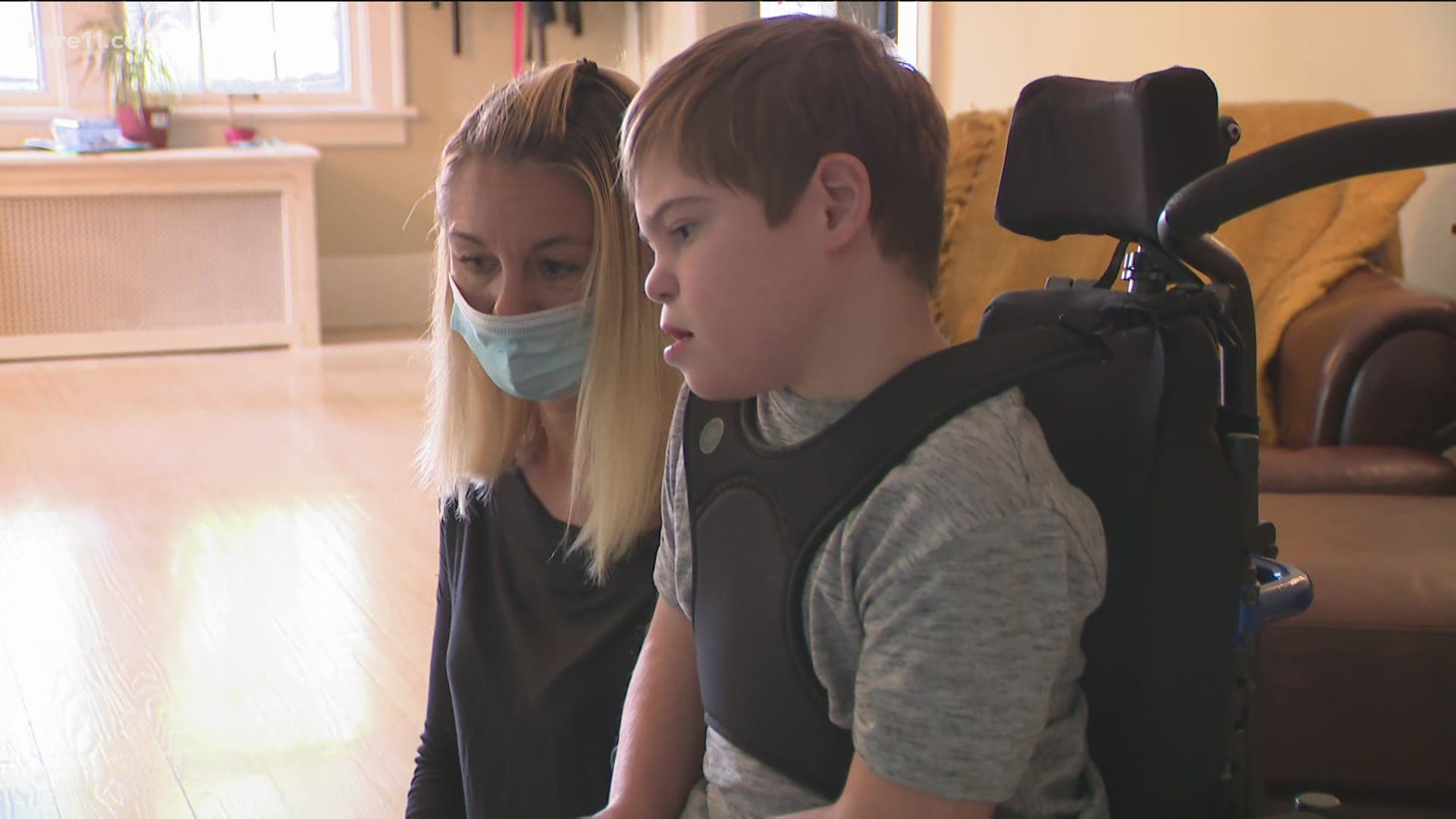ST PAUL, Minn. — Parents of children with extreme special needs say their kids have not received the education they are legally entitled to with distance learning in part because state education rules were standing in the way.
Now, the Minnesota Department of Education (MDE) has issued new guidance.
The new rules stem from an executive order by Governor Tim Walz calling for districts to prioritize in-person education for students most at need. MDE’s guidance also gives districts the flexibility to send staff into the homes of children for one-on-one instruction if it can be done safely.
“We’ve heard interest from school districts in wanting to do this,” said Deputy Education Commissioner Daron Korte said.
Korte said they’d also heard from parents and lawmakers concerned that earlier rules kept kids from getting the free and appropriate public education the law requires. He acknowledged the new guidance might not help all students stuck in that situation.
“I think that we have provided all the tools in the toolbox that we can,” Korte said.
Among those students is Charlie Drayton of St. Paul. Charlie has cerebral palsy and Down's syndrome. He attends Bridge View, a specialized St. Paul public school for children with severe special needs.
Charlie’s education plan is complex and revolves around one-on-one instruction to meet his many physical challenges, according to his parents. They say distance learning doesn’t provide that.
“He does get an educational component but he also gets the therapy that goes along with kids who have more multiple disabilities,” said Chuck Drayton, Charlie’s dad.


After starting the year in distance learning, St. Paul Public Schools pivoted to allow kids like Charlie to attend a hybrid schedule. But as COVID-19 cases rise, Charlie is once again temporarily moving back to schooling at home.
His mom, Teagan, says during distance learning his IEP (Individualized Education Plan) is not being met.
“The teacher, the therapists, the school is great. Their hands are tied. These kids need one-on-one,” she explained.
But even with the new guidelines, Charlie may not receive more in-person help. School districts are not required to expand in-home or in-person learning options, and many say they simply don’t have the staff to do it with COVID-19 cases on the rise.
A St. Paul Public Schools spokesman said right now there is no plan to offer in-home help.
“We are looking at details of the Governor's Executive Order to determine what is possible and what we may be able to implement during a time of rapidly increasing COVID-19 cases,” said SPPS spokesman Kevin Burns.
KARE 11 surveyed the five largest school districts in Minnesota in the wake of the new MDE guidance. None had immediate plans to offer in-home instruction for children with special needs.
Osseo Schools said they are making arrangements for eligible special education students to receive services at school buildings at least a few days per week.
District 196 is also offering on-site instruction for some students.
Anoka-Hennepin said they are reviewing the guidance and hope to have a plan in place for in-person instruction by the end of the month.


And Minneapolis Superintendent Ed Graff said they were “reviewing the governor’s order about in-person supports” but the rising COVID cases had required them to “take a pause” on plans for more services for children with special needs.
In some other districts, administrators have agreed to contract with PCA agencies to provide some distance learning services to students.
Advocates said the new guidance is a start, but school districts need to do better.
“Students across the state have not been having their needs met and it’s been a long time,” said Maren Hulden with the Disability Law Center. “We are really going to be looking to see how many districts use these options that MDE has made available.”
Charlie’s parents, Chuck and Teagan are hoping their son can return to class in-person and, if not, that St. Paul will find a way to teach him.
“It seems like there’s a safe way to get the education and therapies but there’s not a willingness to make it happen,” said Chuck.

